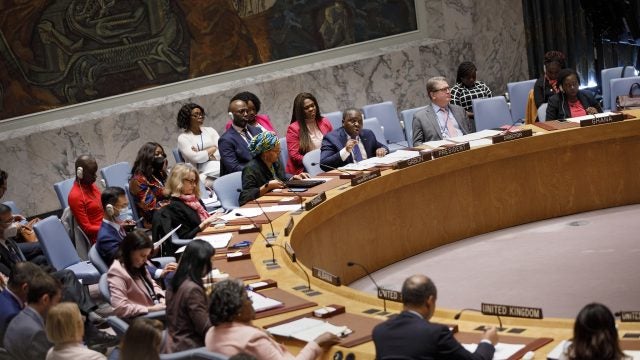
Title: The Modern Aim and Growth of the Brazilian Defense Industry
While the implications of COVD-19 continue to dominate Brazil’s political and economic landscape, the Brazilian defense industry remains a prominent topic in its relationship with the United States and the rest of the world. Although it remains a soft power, Brazil seeks to enhance its defense capabilities both regionally and internationally.
In March of this year, Brazil and the United States signed an agreement for the development of mutual defense capabilities, which was heralded as a significant step to the coordination of joint US-Brazil policy. Certainly, Brazil stands to be a major recipient of American aid in the expansion of military capacity, while simultaneously aspiring to channel economic growth to enhance its defense capabilities. Ultimately, however, Brazil’s prominent defense industry is an extension of its aim of economic expansion, which has been stifled in recent years with the stagnation of the economy and consequent limitations on defense spending.
Brazil has taken significant steps to promote the expansion of the defense industry. Although Brazil only invested 1.5 percent of its GDP―27.9 billion USD―towards defense in 2019, the industry has taken on many projects that advance the military’s technological capabilities. Brazilian aircraft manufacturer Embraer has overseen the construction of the KC-390, the largest military aircraft to be manufactured in the region. For Brazil’s Navy, construction of the PROSUB submarine aims to strengthen the industrial base, centered on the development of electronics, mechanical engineering, chemical, and shipbuilding. By far the largest projects include the Brazilian Navy’s submarine and nuclear programs, the Brazilian Army’s Guarani wheeled vehicles, border and cybersecurity monitoring, and the Brazilian Air Force’s KC-390 aircraft, Gripen aircraft and space program.
By expanding the defense industry domestically, Brazil seeks to increase defense expenditure and promote more foreign investment into Brazil. Currently, Brazil’s defense industry consists of 220 companies and serves around 85 countries worldwide. In 2019, sales abroad totaled 1.23 billion USD. By integrating internationally with foreign corporations, Brazil seeks to enhance its military presence in the western hemisphere and around the world.
In addition to direct financial strategizing, Brazil has also used its defense industry to deepen diplomatic ties. The primary international player in the development of Brazil’s defense industry is the United States. In March 2020, the United States and Brazil signed an agreement giving Brazil access to defense financing, declaring Brazil a primary non-NATO ally. The two countries formalized an agreement known as the Research, Development, Test and Evaluation (RTD&E), which would potentially allow Brazil to pursue defense projects with access to the US Defense Department’s budget. Through this agreement, Brazil could use American companies as a vehicle for the exchange of intellectual property and defense technology. Although recent moves by the Bolsonaro and Trump administrations seem to indicate increased US interest in Brazil’s defense sector, the US-Brazil defense relationship dates back several years before the Trump era.
Particularly noteworthy is the Research, Development, Test and Evaluation Agreement, initiated under the Temer administration in 2017. After establishing this US-Brazil defense dialogue, the two countries have been collaborating on defense projects and intellectual property policies. Brazil has used the United States’s NATO resources to integrate defense contracts and the funding to protect the Amazon. Some of its main projects include multi-role aircraft, multi-mission helicopters, naval vessels, aircraft carriers, and transport helicopters. The two countries also have a legacy of defense collaboration, with a Defense Industry Dialogue (DID) initiated in 2016 during the Obama administration, which sought to integrate the private sector into the U.S.-Brazil partnership, while coordinating technological advancement through the US Departments of Commerce and Defense and the Brazilian Ministries of Defense and External Relations.
But Brazil’s foreign defense collaboration is not limited to the United States. In recent years, Brazil has notably been partnering with Sweden, who built the F-39 Gripen combat aircraft for the Brazilian Air Force. There is also competition from China. The giant Huawei supplies the Brazilian telecom sector, serving as a rival to the United States’s sphere of influence in the South American region. The United States recently asked Brazil to ban Huawei from a 5G auction in order to solidify the primacy of the US-Brazil defense trade relationship.
Brazil also has a history of coordination with the United Nations, primarily in addressing the preservation of international peace and security. Brazil participated in the Minustah peace deployment in Haiti until 2017 and has been generally active in the United Nations’s African policy as well. Brazilian Defense capabilities have been frequently used for cybersecurity, border control, organized crime, drug enforcement, and the protection of the Amazon.
But the path to defense coordination is not entirely secure. The relationship with the Amazon is a prime example that reflects the militarization of political and economic policy. With Bolsonaro’s recent deployment of troops to fight Amazonian wildfires, international pressure to prevent defense interference in the region reveals the contentious nature of the Brazilian political and military relationship. The Amazon has a history of military presence, dating back to the dictatorship from 1964-1985, during which time the Trans-Amazon Highway was built.
The recent surge in COVID-19 cases in Brazil will also have a considerable political and monetary impact on Brazil, despite that the defense budget allocation for the year remains to be seen. The Brazilian government may need to divert Embraer’s defense spending in favor of commercial aviation, particularly with the Gripen and KC-390 aircrafts. In April, American aircraft manufacturer Boeing announced the termination of a $4.2 billion deal with Embraer, which will have heavy ramifications for the KC-390 project, and could lead Embraer to seek partnerships with companies in India or China.
Nonetheless, Brazil remains an international soft power with limited aspirations of military dominance in the region. Any adoption of hard power would require significant spending, could antagonize the United States and regional powers, and would be met with resistance by the Brazilian populace. Turning to foreign powers such as China or Russia in the acquisition of air, naval, and space technology would disrupt the region’s balance of power and undermine its current allies. As modeled by Waltz’s security dilemma, Brazil’s assertion of regional hegemony would compel other South American nations to ratchet up defense spending in response. Brazil can only hope to enhance its defense industry by maintaining a “low profile” with a clear dependence on more prominent powers such as the United States, Europe, and China. The Brazilian defense industry, though poised to grow, must contend with recent economic stagnation and the unpredictable consequences of the coronavirus if it seeks to expand even further.
. . .
Peter Sufrin is an Associate Member of the Inter-American Dialogue, with a focus on Brazilian Affairs. He holds a BA in History from the University at Buffalo, an MA in History from Boston University, an MA in International Relations from Seton Hall University, and an MA in Portuguese from the University of Massachusetts-Dartmouth. He is a regular contributor to online publications such as the Dialogue’s Latin America Advisor, Brazzil, and American Diplomacy. He currently resides in Washington, D.C.
Image Credit: Ministério da Defesa, CC BY 2.0, via Wikimedia Commons
Recommended Articles

This article explores the uncertain future of Arctic governance amid shifting global geopolitics. It argues that whether Washington and Moscow opt for confrontation or cooperation, multilateralism in the Arctic…

Twenty-five years ago, the United Nations Security Council adopted Resolution 1325, establishing a framework that underpins the Women, Peace, and Security (WPS) Agenda. The Resolution recognized both the…

When we analyze conflicts in the Middle East, we are not analyzing conflicts with isolated impacts but risks for global energy security. Recent conflicts in the Middle East have highlighted…